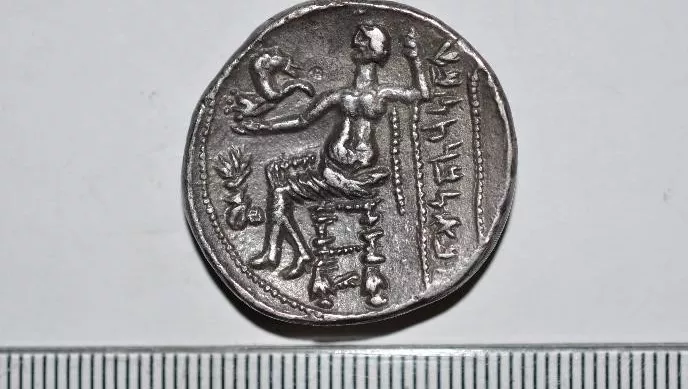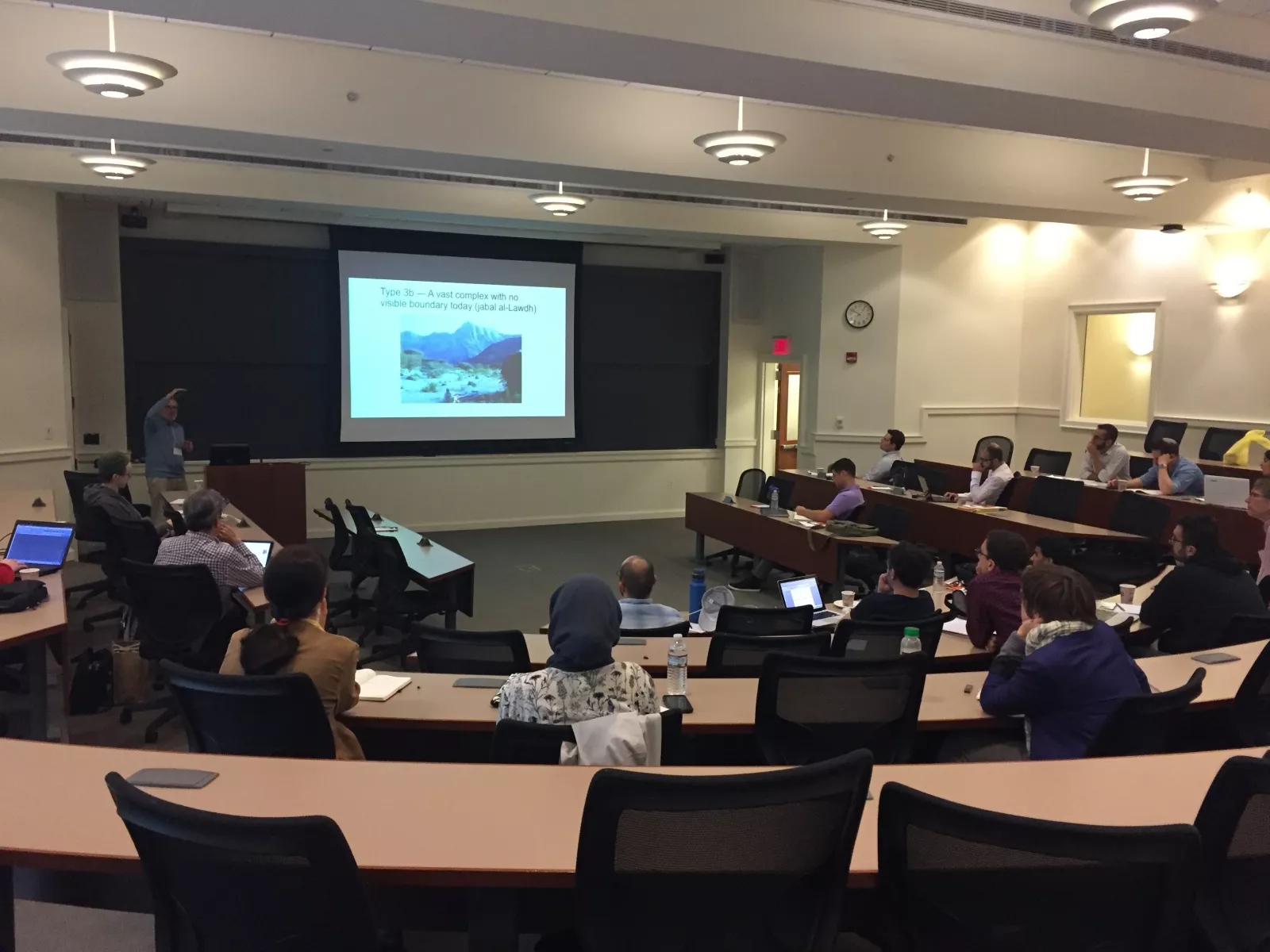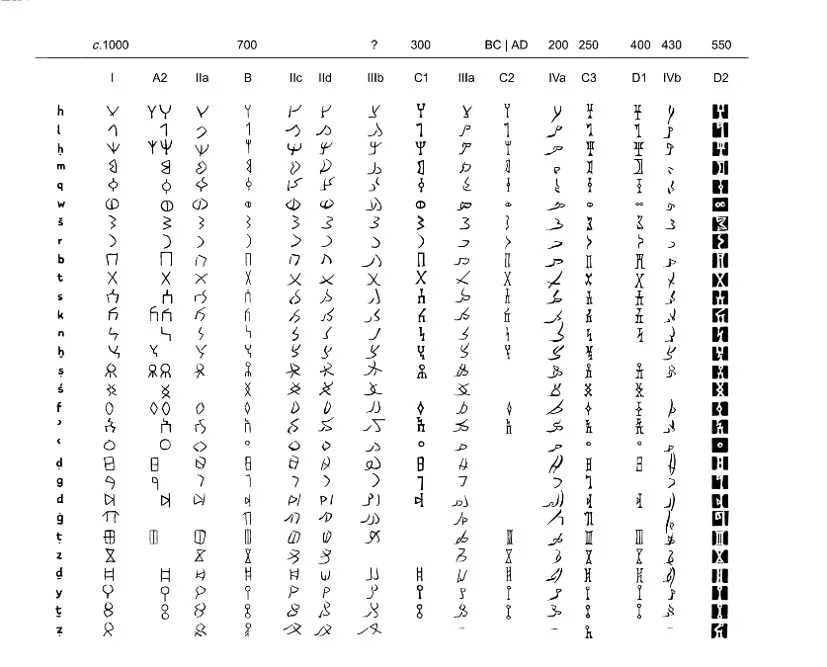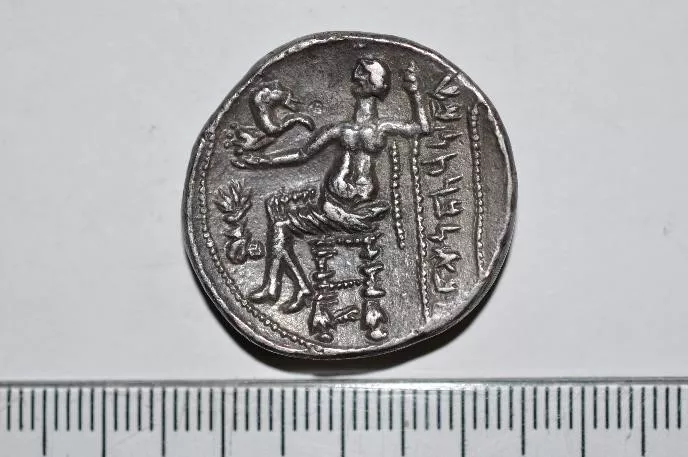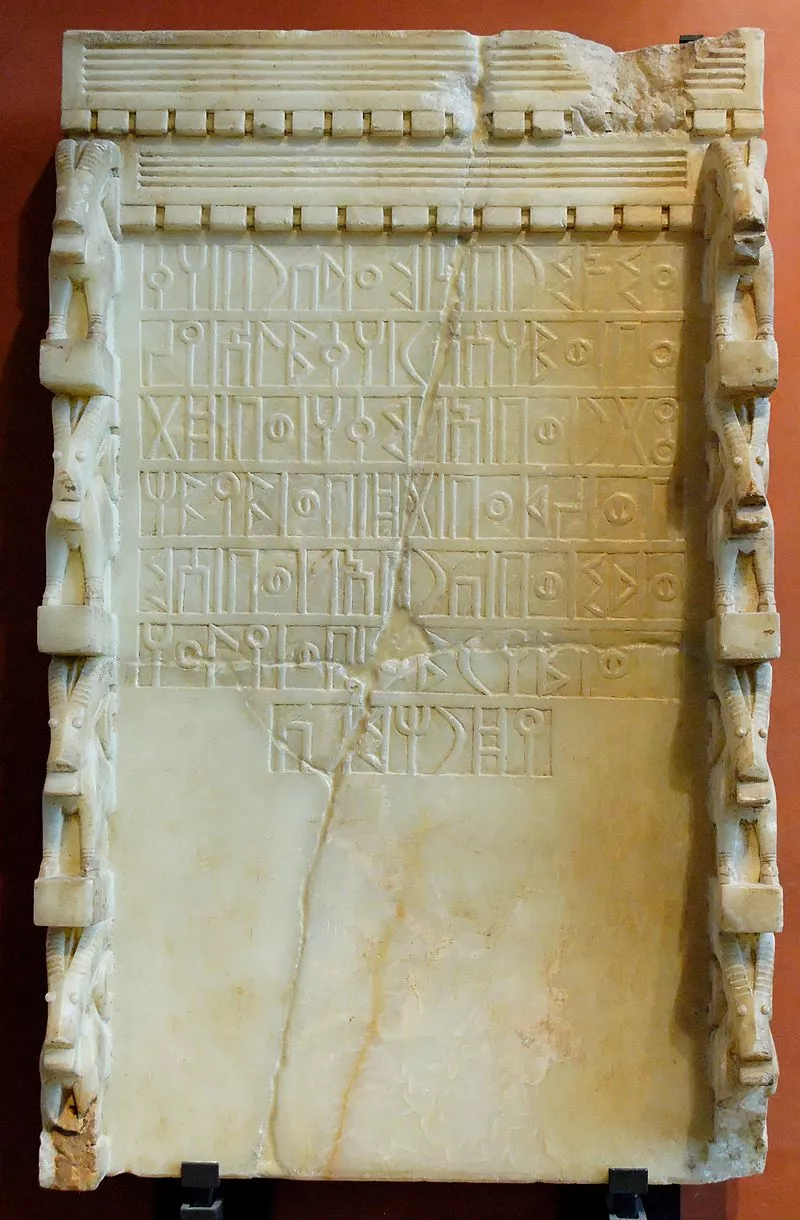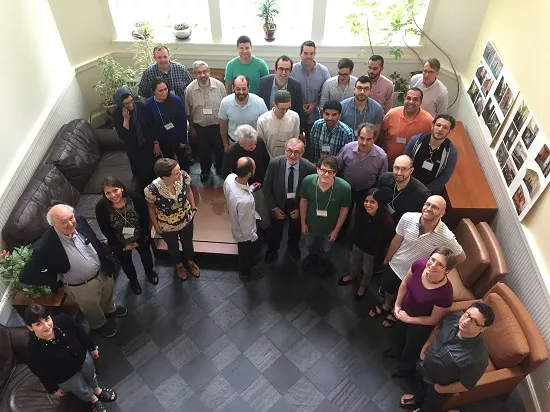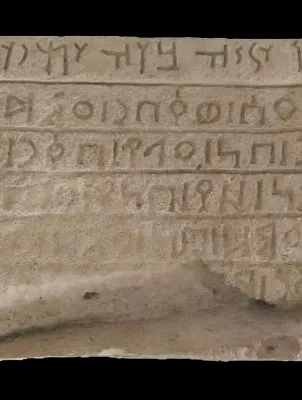
Earlier this summer Matthew Jameson spent a week at Princeton University learning the basics of a poorly understood writing script from one of the few people in the world who can read it. Matthew is a Ph.D. candidate in the Department of Classical and Near Eastern Archaeology and is specialized in the archaeology and history of pre-Islamic southeastern Arabia. As part of the Princeton “Intensive Course on Pre-Islamic Arabia” Matthew and other interested archaeologists, historians, and philologists with research stakes in the Arabian Peninsula gathered to hear about the South Arabian script. The South Arabian script is a writing system used to write several languages that were spoken across Arabia from the early first millennium BCE until Arabic - a close relative of South Arabian - spread throughout southern Arabia by the end of the 6th c. CE. The week-long seminar afforded Matthew and his colleagues the opportunity to deeply engage with examples of South Arabian texts – ranging from monumental inscriptions, administrative receipts, and even wall graffiti.
Each day at 9 a.m. Matthew and his peers were handed a language packet containing facsimiles of real South Arabian inscriptions. They would have three hours to transcribe and translate the inscriptions to the best of their ability, because immersion is the best method for learning even poorly understood scripts and languages. Each afternoon, students would learn a bit more about the historical, social, economic, or political contexts of the inscriptions they just translated through lectures on the archaeology and architecture of the culturally rich regions situated around southern Arabia in antiquity.
As Matthew notes, there are only about five modern specialists who can actually read the South Arabian script. The seminar was led by Professor Christian Julien Robin of the Centre National de la Recherche Scientifique, a leading expert in the study of pre-Islamic Arabia. It is through courses such as the one at Princeton that these scholars hope to inspire up-and-coming scholars on Arabian history and archaeology to motivate them to carry the mantle forward.
Since a script is a symbolic notation system, South Arabian, like other alphabetical systems, was versatile and utilized in writing early Arabian languages such as Sabaic, Himyaritic, Hagaritic, Minaic, and their linguistic predecessors. In this sense South Arabian is not unlike the Latin alphabet, used to write English, German, and the myriad of Romance languages. Each of these languages are within the Semitic branch of languages and are related to Aramaic and Hebrew.
Yet while the genealogy of these languages is understood, the origins of the South Arabian script are still debated. One fact Matthew found particularly interesting was that the first major South Arabian inscription appears in the mid-8th c. BCE at the site of Sirwah in an already fully developed monumental form. This inscription documents the military campaigns of Karib’il Watar, one of the earliest rulers of the Sabaean kingdom. Typically, early examples of a language or writing system appear in small fragments or short statements, either inscribed on pieces of pottery or small sacred dedications, or in the mundane administrative records of resource distributors. It is not clear what the connection is between the monumental and miniscule South Arabian scripts, as far as the current state of scholarly knowledge is concerned. This underscores the importance of the session as it is up to young scholars to undertake this fundamental work.
Around the early 7th c. CE, when the prophet Mohammed began proselytizing revelations said to be directly from God, the Himyaritic kingdom was embroiled in internal upheavals across southern Arabia and east Africa. Just before southern Arabia transitioned to Islam in the 7th c.CE, Himyar was in control from their base in the mountains of western Yemen. At the turn of the first millennium the Himyarite kingdom was polytheistic, worshipping many gods of southern Arabian origin but focusing primarily on the god Rahman, before the kingdom officially converted to Judaism towards the end of the 4th c. CE. It was around this time that the Himyarites became interested in maintaining positive trade relations with the neighboring Byzantine and Sasanian Empires.
In the session, attendees were taught the different ways in which the script was written, one form used for monumental inscriptions in stone, and another “minuscule script, akin to cursive, for day to day writing and recording on palm fronds. Matthew was particularly interested in a type of miniscule script utilized in graffiti. Much like today, South Arabian graffiti would be overlain over older marked facades. Many were dedicatory markings to a deity and often associated with images of animals, such as the dromedary camel native to southern Arabia. Sometimes individuals would even return to these spaces and graffiti over their own earlier markings.
Matthew’s ongoing Ph.D. dissertation research focuses on glazed imported pottery in southeastern Arabia during the Hellenistic period and a period of contact with Rome (roughly end of the 4th c. BCE – the 3rd c. CE), more adequately described as the late pre-Islamic period in Arabia as not to privilege a Western perspective. Ultimately Matthew aims to use this pottery to develop a profile of inter-regional trade during this period, as well as gain a better understanding of how this particular type of ceramic was used locally. For Matthew, the Princeton session afforded him the opportunity to read inscriptions that speak of interactions between the southern Arabian kingdoms and southeastern Arabia during this time. These inscriptions form the critical core of historical information, mostly documented in the form of epigraphy from an Arabian perspective, that will help Matthew better characterize the political and social organization, and especially trade, during his period of focus.
The “Intensive Course on Pre-Islamic Arabia” took place at Princeton, New Jersey from May 28 - June 1, 2018 and was made possible by a number of generous grants from the David A. Gardner '69 Magic Project and organized by the Department of Near Eastern Studies. It is part of a broader series of intensive courses for graduate students and scholars on pre-Islamic Arabia and Islamic Studies more broadly.
